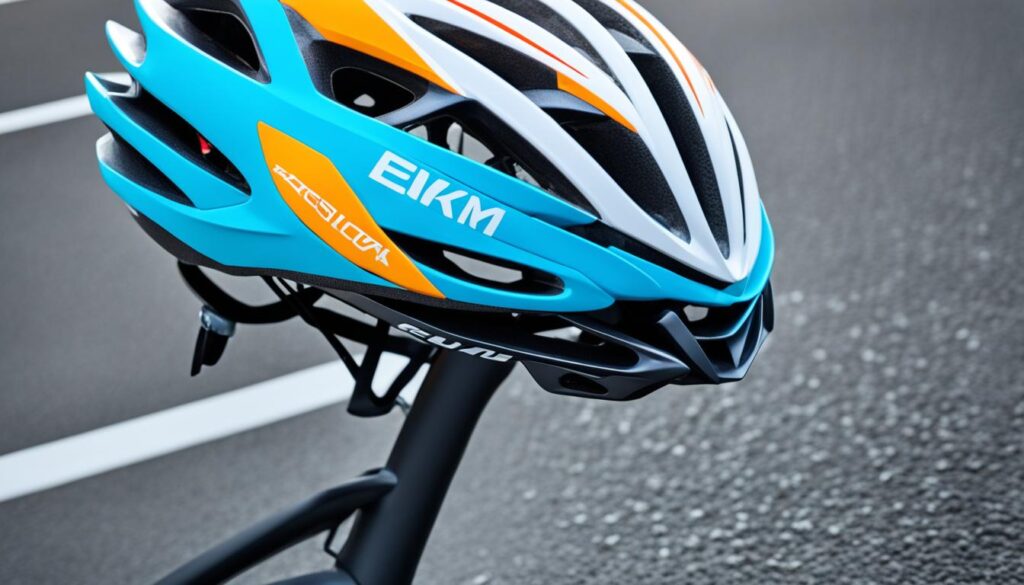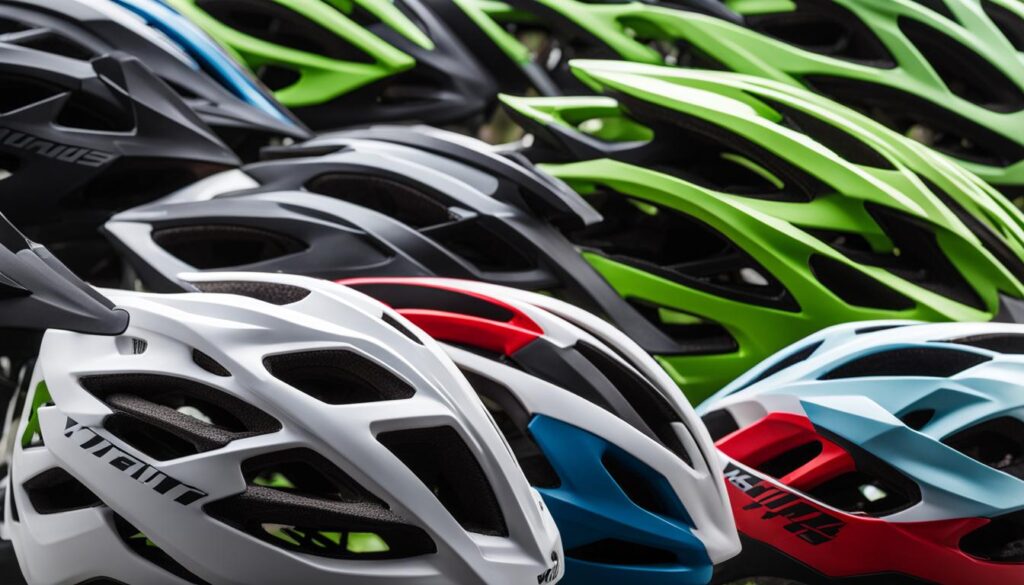
When it comes to bike helmets, making an informed decision is crucial for your safety. In many states, wearing an approved helmet is required by law while riding. Approved helmets meet stringent safety standards, including requirements for construction, design, performance, and safe use instructions.
The development of a helmet is an extensive process that can take up to 2 years. Helmets work by absorbing impact energy, distributing the load, and providing a retention system to keep the helmet in place. The right fit is essential, considering different head sizes and shapes. Sizing can vary between brands, so measuring your head circumference is necessary. Helmet shape should also be taken into account, as different brands have their own ideas of head shape. Retention systems and tightening mechanisms should be easy to adjust and secure. Pressure points should be avoided, and considerations like hair port and compatibility with sunglasses should be taken into account.
It’s important to check for safety certifications and additional features like MIPS (Multi-directional Impact Protection System) that reduce rotational force and improve head protection. Regularly replacing old or damaged helmets is essential for optimal safety.
Key Takeaways:
- Wearing an approved helmet is required by law in many states.
- Helmets work by absorbing impact energy, distributing the load, and providing a retention system.
- The right fit is crucial, considering different head sizes and shapes.
- Check for safety certifications and additional features like MIPS.
- Regularly replace old or damaged helmets for optimal safety.
Understanding Safety Standards and Requirements.
When it comes to bike helmet safety, wearing an approved helmet is essential. In fact, many states have laws that require cyclists to wear helmets while riding. These laws exist to protect riders and reduce the risk of head injuries. But what exactly makes a helmet “approved” and how does it ensure your safety?
Approved helmets meet strict safety standards for construction, design, performance, and safe use instructions. These standards are put in place to ensure that helmets provide adequate protection and durability when exposed to various environments and potential accidents. For example, helmets should not obstruct vision and should effectively distribute the force of impact to minimize head injuries.
Moreover, approved helmets are designed to securely remain on the wearer’s head during a crash or accident. This prevents the helmet from coming off and leaving the rider vulnerable to serious head injuries.
Research shows that wearing a helmet can significantly reduce the risk of head, brain, and severe brain injuries by 63-88%. So, choosing an approved helmet and wearing it properly is crucial for your safety whenever you hop on your bike.
It’s important to check for safety certifications when purchasing a helmet. Look for labels or markings indicating that the helmet has met the required safety standards. This ensures that the helmet has undergone thorough testing and meets the necessary criteria for protecting your head.
Remember, wearing a bike helmet isn’t just a legal requirement – it’s a vital step in ensuring your safety on the road.
The Importance of Wearing a Bike Helmet
Wearing a bike helmet is essential for the protection of your head and overall safety while cycling. A helmet acts as a protective barrier, absorbing impact energy and reducing the risk of severe head injuries.
Studies have consistently shown that wearing a helmet can significantly reduce the severity of head injuries in the event of a crash or accident. In fact, helmets have been estimated to reduce the risk of head, brain, and severe brain injuries by 63-88%. This statistic alone highlights the importance of wearing a bike helmet whenever you ride.
By wearing a helmet, you provide a layer of protection that helps to distribute the force of impact, minimizing the risk of traumatic brain injuries. A helmet acts as a cushion, absorbing and dissipating the energy generated during a collision or fall. It helps to prevent direct impact and reduces the risk of skull fractures and brain trauma.
Ultimately, wearing a helmet is a simple yet effective way to protect yourself from potentially life-threatening injuries while cycling. It is crucial to prioritize your safety by wearing an approved helmet that meets the necessary safety standards and ensuring it fits properly.
Factors to Consider for the Right Fit.
Getting the right fit for your helmet is crucial to ensure optimal protection. Different brands may have different sizing methods, so it’s important to measure the circumference of your head and check the helmet sizing to find the correct fit. Helmet shape can vary between brands, so trying on the helmet before purchase is recommended.
The retention system should fit snugly under the chin, with the strap making a V shape under the ears. It should be easy to adjust and stay securely in place. Tightening mechanisms that create a snug fit and additional padding for comfort and stability are important features to consider. It is essential to avoid any pressure points or uneven pressure on the head.
Other considerations include a hair port for those with long hair and compatibility with sunglasses. The helmet should fit properly and be securely fastened to provide optimal protection.
Helmet Fit and Sizing Tips
| Size | Head Circumference (inches) |
|---|---|
| Small | 20-21.75 |
| Medium | 21.75-23.25 |
| Large | 23.25-24.75 |
| X-Large | 24.75-26 |
Note: The table above provides general guidelines for head circumference and helmet sizing. It’s important to refer to the specific sizing chart provided by the helmet manufacturer for accurate measurements.
Remember, the right fit is crucial to ensure the helmet stays securely in place during rides and provides optimal protection. Take the time to measure your head circumference, try on different helmet brands to find the best fit, and consider the comfort and adjustability features that suit your needs. By selecting the perfect helmet, you can ride with confidence and prioritize your safety.
Choosing the Right Helmet for Your Cycling Discipline.
When it comes to cycling, different disciplines require different types of helmets. Understanding the specific features and designs suited for each discipline is crucial for maximizing safety and performance.
Mountain bike helmets are specifically designed to provide extra coverage and protection in all directions. They feature additional padding in the back of the helmet to account for the rougher terrain and the likelihood of falling backward. These helmets are essential for off-road trails and mountain biking adventures.

Road bike helmets, on the other hand, prioritize lightweight construction and aerodynamic design. With more vents for improved airflow, these helmets are perfect for smooth surfaces and higher speeds. They provide the necessary protection while maintaining optimal comfort for long road rides.
Triathlon helmets offer an aerodynamic shape and lightweight build, allowing athletes to reduce drag and improve their performance during races. These helmets are specifically designed to meet the unique needs of triathletes, combining safety and speed.
For those who commute daily or ride in urban environments, commuting helmets are the ideal choice. They prioritize features like built-in lights, increased visibility, and durability to ensure safety during everyday rides.
Choosing the right helmet that corresponds to your specific cycling discipline is essential for enjoying a comfortable and safe ride. Consider the terrain, speed, and unique features required for your chosen discipline. Make sure to invest in a helmet that meets the highest safety standards and provides the necessary protection for your cycling needs.
Tips for Finding the Best Bike Helmet.
When searching for the best bike helmet, it’s important to consider the type of riding you’ll be doing. Whether you’re into road biking, mountain biking, triathlons, or commuting, there are specific helmets designed to meet your needs. Here are some tips to help you select the perfect helmet:
- Check for Safety Features: Look for helmets with features like padding, ventilation, visors, and full-face protection, depending on the type of riding you’ll be doing. These features provide added comfort and enhance your safety on the road or trail.
- Prioritize Fit and Comfort: The right helmet should fit snugly on your head without tilting back and should also provide forehead protection. Make sure it sits flat and secure, with an adjustable retention system and chin strap for a customized fit.
- Consider Advanced Technology: Helmets with advanced technologies like MIPS (Multi-directional Impact Protection System) are designed to reduce rotational force during impacts. Look for helmets that incorporate this technology to enhance your head protection.
- Weight and Aerodynamics: Consider the weight and aerodynamics of the helmet, as these factors can impact your overall comfort and performance while riding.
- Choose a Visually Appealing Design: While safety is paramount, it doesn’t hurt to choose a helmet in a color or design that you find visually appealing. A helmet that stands out can also improve your visibility on the road.
- Ensure Safety Certifications: Always check for safety certifications to ensure that the helmet meets required standards for impact protection. Look for certifications like CPSC (Consumer Product Safety Commission) or Snell to ensure the helmet’s quality.
By following these tips, you’ll be able to find the best bike helmet that combines safety, performance, and comfort for your specific cycling needs.

How to Properly Adjust and Maintain Your Bike Helmet.
Ensuring the proper adjustment and maintenance of your bike helmet is essential for optimal safety. By following these steps, you can maximize the protection provided by your helmet:
- Adjusting the tightness: Start by adjusting the tightness of your helmet using the wheel or dial located on the back. The helmet should fit snugly but not be uncomfortable, staying securely in place.
- Buckling the chin strap: Fasten the chin strap and ensure that it forms a V shape under each ear. It should sit comfortably on your chin without causing any discomfort. This ensures that the helmet remains securely in place during your ride.
- Checking the fit: Open your mouth wide while wearing the helmet to check if it presses down on your head. A proper fit will allow for comfortable movement without the helmet shifting or causing any discomfort.
Regularly maintaining your helmet is equally important for long-lasting protection:
- Inspecting for damage: Regularly check your helmet for any signs of damage, such as cracks, dents, or loose parts. Ensure that the protective foam liner and shell are intact and undamaged.
- Replacing after a crash: If your helmet has been involved in a crash or shows signs of deterioration, it’s crucial to replace it immediately. Even if your helmet hasn’t been in a crash, some manufacturers recommend replacing helmets after approximately five years to ensure optimal safety.
- Avoiding direct sunlight: Avoid leaving your helmet in direct sunlight for extended periods, as prolonged exposure to sunlight can deteriorate the materials.
By following these adjustment and maintenance tips, you can ensure that your bike helmet provides prolonged protection and safety for your rides.
Conclusion.
Choosing the right bike helmet is of utmost importance for your safety while cycling. Not only do helmets protect your head from serious injuries, but they also ensure compliance with legal requirements in many states. Safety standards and certifications guarantee that the helmets meet strict requirements for construction, design, and performance.
Ensuring the right fit is crucial when selecting a helmet. Factors such as head size, helmet shape, and retention systems should be taken into consideration. Different cycling disciplines require specific types of helmets with unique features, so it’s essential to choose accordingly.
To prioritize your safety, look for top-rated helmets that provide the best combination of safety, comfort, and performance for your specific cycling needs. Regularly adjusting and maintaining your helmet is crucial to ensure it remains in optimal condition. Remember to always wear a helmet when riding a bike to protect your head and reduce the risk of traumatic brain injuries. Make an informed decision when selecting a bike helmet and prioritize your safety above all else.
Source Links
- https://www.bikeexchange.com/blog/bicycle-helmet-buyers-guide
- https://www.consumerreports.org/health/bike-helmets/buying-guide/
- https://bicyclewarehouse.com/blogs/news/how-to-choose-the-best-bike-helmet

Meet James Smith, affectionately known by friends as ‘Biker Smith’, your go-to expert at ‘Best HD Helmet Camera’. At 35, living in the USA, James embodies the spirit of adventure. His life is a thrilling ride, powered by his Harley Davidson Softail and BMW S 1000 RR, with his girlfriend as his favorite travel companion. A software developer by profession, James’s heart beats for the open road, making him a full-time traveler at heart. His passion for biking and technology merges seamlessly on this platform. Recognizing a gap in discussions around helmet cameras, he founded this blog to educate and inspire fellow enthusiasts. His mission? To elevate your riding experience with the best HD helmet camera insights, backed by firsthand experiences, rigorous testing, and a genuine love for the ride. Trust James to guide you through the world of helmet cameras, where quality, innovation, and safety ride together.